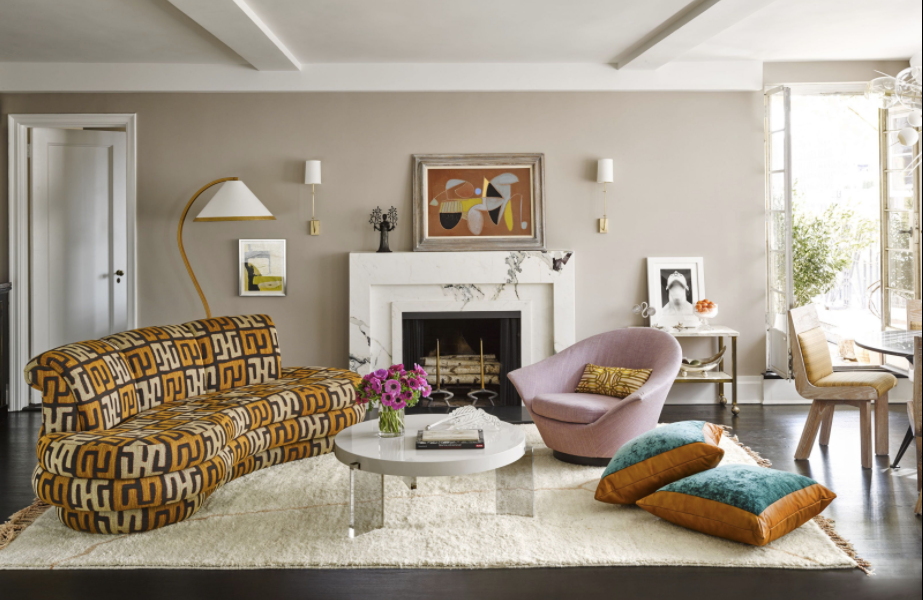We are more than halfway through 2017 and I can proudly say that ‘Africa is the New Black’! We launched our new FALOMO RISE Collection at Maison & Objet in Paris beginning of the year and I just have been back to Paris for our pop-up showroom with Lago54, which featured contemporary African designers during Paris Design Week. The feedback from press and buyers has been great and it puts a smile on my face to see such a strong and diverse presence of the African aesthetic in the world of design, across many disciplines.

Ikea is collaborating with designers from across the African content to develop a new ‘Africa’ collection that will launch in 2019, the luxury Belgian candle brand Baobab recently launched an African collection and our cushions and pouffes are now part of the recently refurbished luxury Kanuhura resort in the Maldives. So I assume you agree with me when I say ‘Africa IS the new black’.

But if you are unsure about how to incorporate African textiles in your home without being über-ethnic and stereotypical, we have some great and easy tips for you.
DO YOUR RESEARCH
First of all, it is important to understand the diversity of African textiles. Textile traditions in Africa date back thousands of years and are an integral part of the continent’s culture and history. There are printed textiles, woven textiles, animal furs and hides, the list goes on. Every region and cultural group have their own distinct textile traditions, so familiarising oneself with the options is a great starting point. Have a look at John Gillow’s book ‘African Textiles’, which provides a great summary of the most popular textiles and their origins.
CHOOSE YOUR DESIGN SCHEME
The next step is to understand the design scheme of your home. Do you want to incorporate African textiles into a minimalistic Skandi inspired setting? Do you want to achieve a colourful Boho-style look with texture and patterns? Or do you like to ‘mix and match’ your African textiles with antique furniture and neutral pieces? Everything is possible!

A great sourcing option for design schemes and ideas is Houzz, a website and online community about architecture, interior design and decorating, which lists great African textiles and has a comprehensive image library full of inspiration and ideas.
And of course, there is Instagram, which is my personal favourite source of inspiration. In terms of African textiles and designs, I specifically like Blueprint Africa and Interior Living and for some colourful options, Eva Sonaike, of course!
Get your iPad out, or if you are a traditionalist like me, head to your local stationery shop and get a large piece of white paper to create a mood-board that summarises your vision.
This should give you a good idea of what you want to achieve and you can play around with products, textures, and colours.
WHERE TO SOURCE
When it comes to sourcing the actual print textiles, there are many options for you to explore.
If you have access to an African market anywhere on the African continent or have a shop in your town that stocks African textiles, go and have a look at what is on offer. You can find some nice traditional fabrics, such as adire, a blue indigo dyed cotton cloth, ankara, the colourful wax fabric that originates from Holland or Kente from Ghana, the most popular African cloth, famous for its colourful chequerboard appearance.



Or have a look on eBay! eBay offers a great selection of traditional African fabrics, such a Kuba cloth, Kente and Bogolanfini for often very reasonable prices.
If you see something you like on the internet or a shop, familiarise yourself with the designer or company. There are many design companies that carry African or African-inspired soft furnishings and textiles. So shop around the internet and have a look what is out there.
If you are not sure about colour-ways or textures, we offer sample cards of all our fabrics on our website. So if you like a design, but are not sure about the colours, just order a fabric sample and see how you feel about it. Take the fabrics home, play around with them and see how you feel having them in your setting.

HOW TO DECORATE
A good starting point when it comes to decorating is to use the rule of thumb ‘Less is More’. Begin with a great cushion, a lamp or a pouffe and then build your scheme around it. You may want to stick to one or two items at the beginning and combine them items in matching or complimenting colours and then add items from your mood board as you go along.

Depending on your style, you can then incorporate other African related ornaments, such as colourful Juju hats, wooden statues, and wall coverings or work with contrasting items, such as a minimalist glass console, antique mirrors or a concrete side table. African textiles are so versatile that they fit into any setting.
We have been around for almost ten years now and when I started the company, there weren’t any high-end, African-inspired soft furnishings available on the international design market.
But this has changed! African fashion has seen a boom over the last decade with African’s top designs, such as Lisa Folawyio and Duro Olowu, now being household names in the international fashion scene.
Our ethos has always been to bring luxury African aesthetic to the top end of interior design and I can proudly say that after almost a decade this is finally happening. So you can imagine why I am smiling!




I’ve been thinking about african inspired home decor ideas for ages; i’m so happy to have stumbled on this inspirational and informative article.
Thank you. Long may your success continue.
Absolutely beautiful. I am totally inspired. This is a new and exciting decorating perspective. Very timely.
Leave a comment